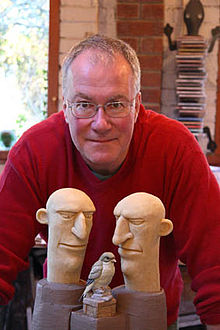Anya Gallaccio is a British artist, who creates site-specific, minimalist installations and often works with organic matter.

Studio glass is the modern use of glass as an artistic medium to produce sculptures or three-dimensional artworks. The glass objects created are intended to make a sculptural or decorative statement. Though usage varies, the term is properly restricted to glass made as art in small workshops, typically with the personal involvement of the artist who designed the piece. This is in contrast to art glass, made by craftsmen in factories, and glass art, covering the whole range of glass with artistic interest made throughout history. Both art glass and studio glass originate in the 19th century, and the terms compare with studio pottery and art pottery, but in glass the term "studio glass" is mostly used for work made in the period beginning in the 1960s with a major revival in interest in artistic glassmaking.

Mona Hatoum is a British-Palestinian multimedia and installation artist who lives in London.
Rina Banerjee is an Indian-American artist and sculptor. She currently lives and works in New York City. Her ambitious mid-career survey exhibition, Make Me a Summary of the World––co-organized by and exhibited at the Pennsylvania Academy of the Fine Arts and the San Jose Museum of Art––opened in 2018 and is slated to travel to the Fowler Museum at UCLA, the Frist Art Museum in Nashville, TN, and the Nasher Museum of Art at Duke University, Durham, NC through July 2021.
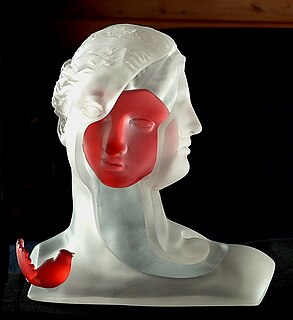
Glass casting is the process in which glass objects are cast by directing molten glass into a mould where it solidifies. The technique has been used since the 15th century BCE in both Ancient Egypt and Mesopotamia. Modern cast glass is formed by a variety of processes such as kiln casting or casting into sand, graphite or metal moulds.
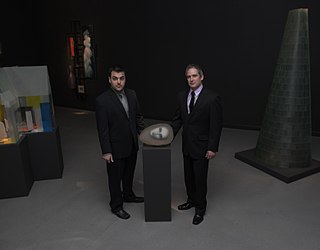
Corey Hampson is a United States based author, curator and a director of Habatat.

Erwin Eisch was a German artist who worked with glass. He was also a painter, draughtsman, and printmaker. Eisch's work in glass, along with that of his friend and colleague Harvey Littleton, embodies the ideas of the international studio glass movement. Eisch is considered a founder of the studio glass movement in Europe.

Richard Ritter is an American studio glass artist who lives in North Carolina.

Yves Jumeau is a French artist who was born in 1955 in Le Mans, France
Linda MacNeil is an American abstract artist, sculptor, and jeweler. She works with glass and metal specializing in contemporary jewelry that combines metalwork with glass to create wearable sculpture. Her focus since 1975 has been sculptural objets d’art and jewelry, and she works in series. MacNeil’s jewelry is considered wearable sculpture and has been her main focus since 1996.

Sudarshan Shetty is a contemporary Indian artist who has worked in painting, sculpture, installation, video, sound and performance. He has exhibited widely in India and more recently he has become increasingly visible on the international stage as an important voice in contemporary art. His work has been exhibited at the Fukuoka Asian Art Museum, Fukuoka, Japan, and the Tate Modern, London, England. The artist has been a resident at the Mattress Factory, Pittsburgh, United States, and was a Ford Foundation Fellow at the New School for General Studies, New York.

Karen LaMonte is an American artist known for her life-size sculptures in ceramic, bronze, marble, and cast glass.

Alison Kinnaird MBE, MA, FGE is a glass sculptor, Celtic musician, teacher and writer born in Edinburgh, Scotland. She is one of the foremost and most original modern glass engravers in Scotland.
Robin Winters is an American conceptual artist and teacher based in New York. Winters is known for creating solo exhibitions containing an interactive durational performance component to his installations, sometimes lasting up to two months. As an early practitioner of Relational Aesthetics Winters has incorporated such devices as blind dates, double dates, dinners, fortune telling, and free consultation in his performances. Throughout his career he has engaged in a wide variety of media, such as performance art, film, video, writing prose and poetry, photography, installation art, printmaking, drawing, painting, ceramic sculpture, bronze sculpture, and glassblowing. Recurring imagery in his work includes faces, boats, cars, bottles, hats, and the fool.
Florian Froehlich, is a contemporary artist who creates paintings, sculptures, stained-glass, and installations.

Ann Robinson is a New Zealand studio glass artist who is internationally renowned for her glass casting work. Robinson is a recipient of the ONZM (2001) and a Lifetime Achievement Award by the American Glass Art Society (2006), and is a Laureate of the Arts Foundation of New Zealand (2006).
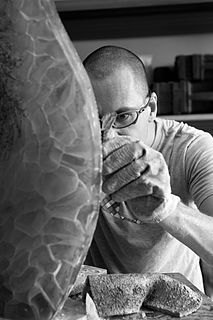
Michael Behrens is a German sculptor working with glass. He operates internationally, mainly in Europe and North America.
Ivana Mašitová is a Czech Glass Artist and Contemporary Glass Artist. She creates mainly Cast Glass Sculptures. Her works are included in many major modern art collections, such as the Victoria & Albert Museum London United Kingdom, Corning Museum of Glass New York USA, National Museum of Modern Art Tokyo Japan, National Gallery Prague the Czech Republic and many others.
Marta Klonowska is a Polish glass maker who is best known for her many animal sculptures. She often depicts animals with a relationship to historical figures or paintings, in natural poses using broken colored glass. Her works have been shown are included in collections internationally, including London, Paris, Berlin, and a solo show in Japan.
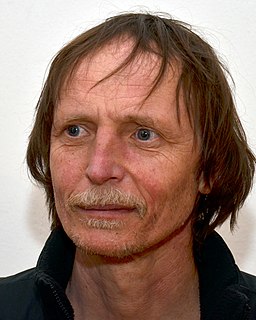
Marian Volráb is a Czech glass artist, painter and university teacher.
